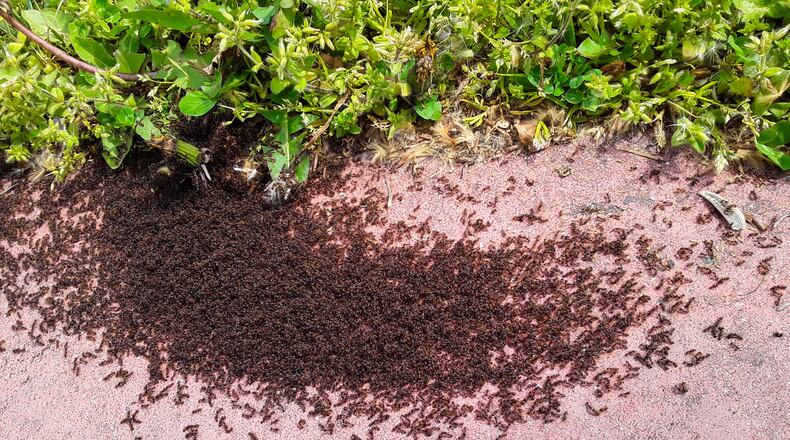Termites have a beaded antenna; it looks like several tiny beads hooked together. Termites don’t have a constricted middle. While ants may be worrisome, termites are much more.
In the spring, under certain conditions (usually after a rain), ants leave their crowded nests to find a new home. They “swarm” or fly around looking to mate. This occurs for a short period of time; they mate and start to build a new home. Termites swarm as well.
If ants are swarming inside the house, or our office as it was, it indicates that there is likely moisture in the area (outside or in the walls) because ants like moisture. It could also indicate that they are living under the concrete or even in the walls of the building.
Last year I learned from my entomologist friend, Jen Andon, about ants that nest in the walls of a house. We have had a problem in the kitchen in two different areas with ants. Anytime there is any trace of food on the floor, they were there in mobs.
Now understand, I try to keep my floors clean, but when you have toddlers running around periodically, and no dog, things get left on the floor. These ants are amazing. They find the food before you can even sweep the floor!
Spraying around the perimeter of the outside of the house helps to prevent ants from getting into the house. However, there was concrete around the walls of this area of the house and no sign of the ants outside.
She suspected that they were inside the walls and suggested the traps made of boric acid. They go into these traps and carry the boric acid back to their home. It worked quite well as we only have a few every now and then.
I also learned about pavement ants from her a few years ago. These are incredibly fascinating. If you ever see hundreds of ants on the sidewalk, look closely at them. They are battling for home territory.
A colony will invade another colony and fight to take over. I sat on the sidewalk for 10 minutes watching these critters fight each other to the death. It was amazing.
“Winner winner chicken dinner” applies here — the winners take the dead home to feed upon. Winner winner, ant dinner, anyone?
If you want to learn more about ants, go to bygl.osu.edu and search for ants. Joe Boggs writes a great article about the pavement ants with lots of great photos!
Pamela Corle-Bennett is the state master gardener volunteer coordinator and horticulture educator for Ohio State University Extension. Contact her by email at bennett.27@osu.edu.
About the Author
